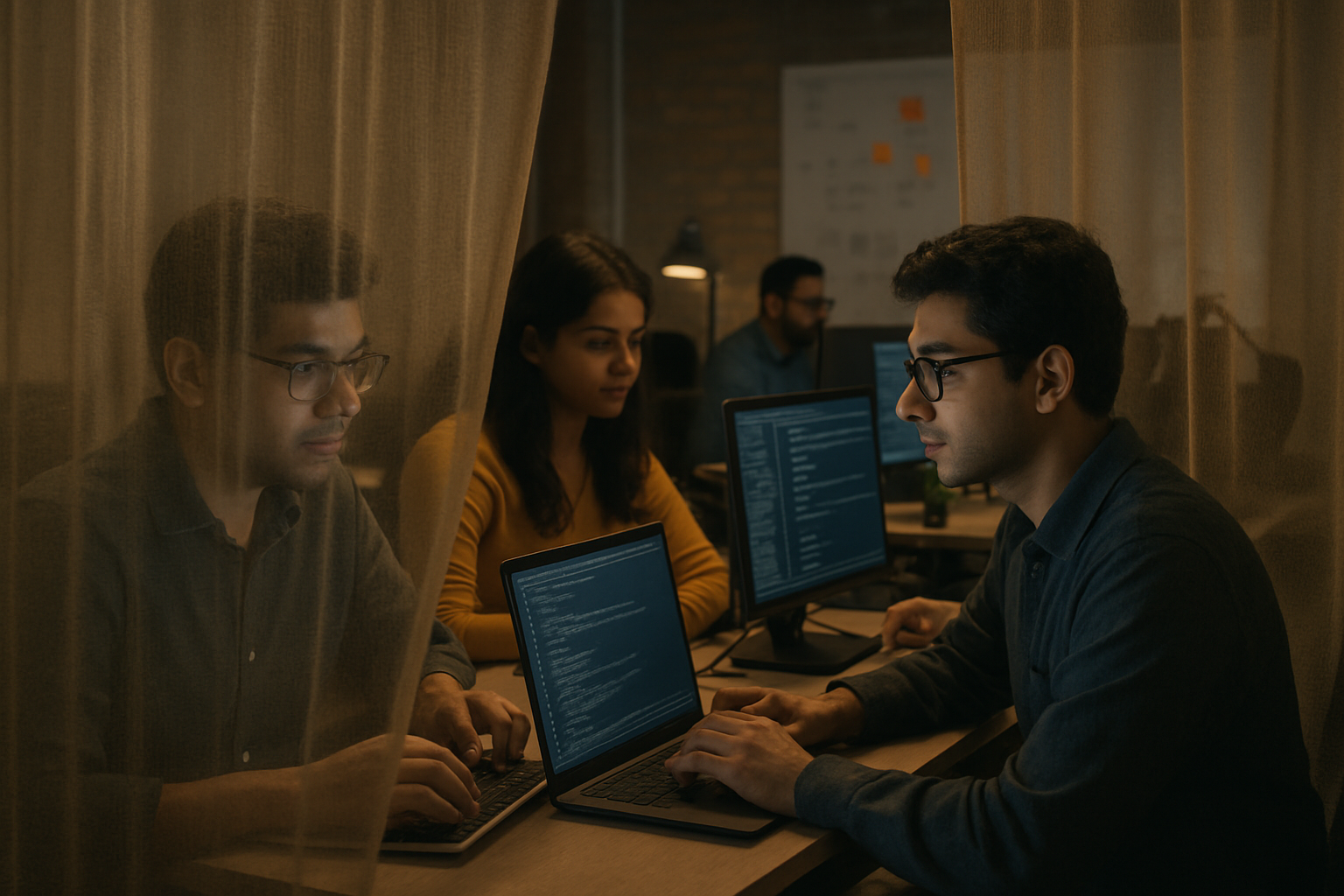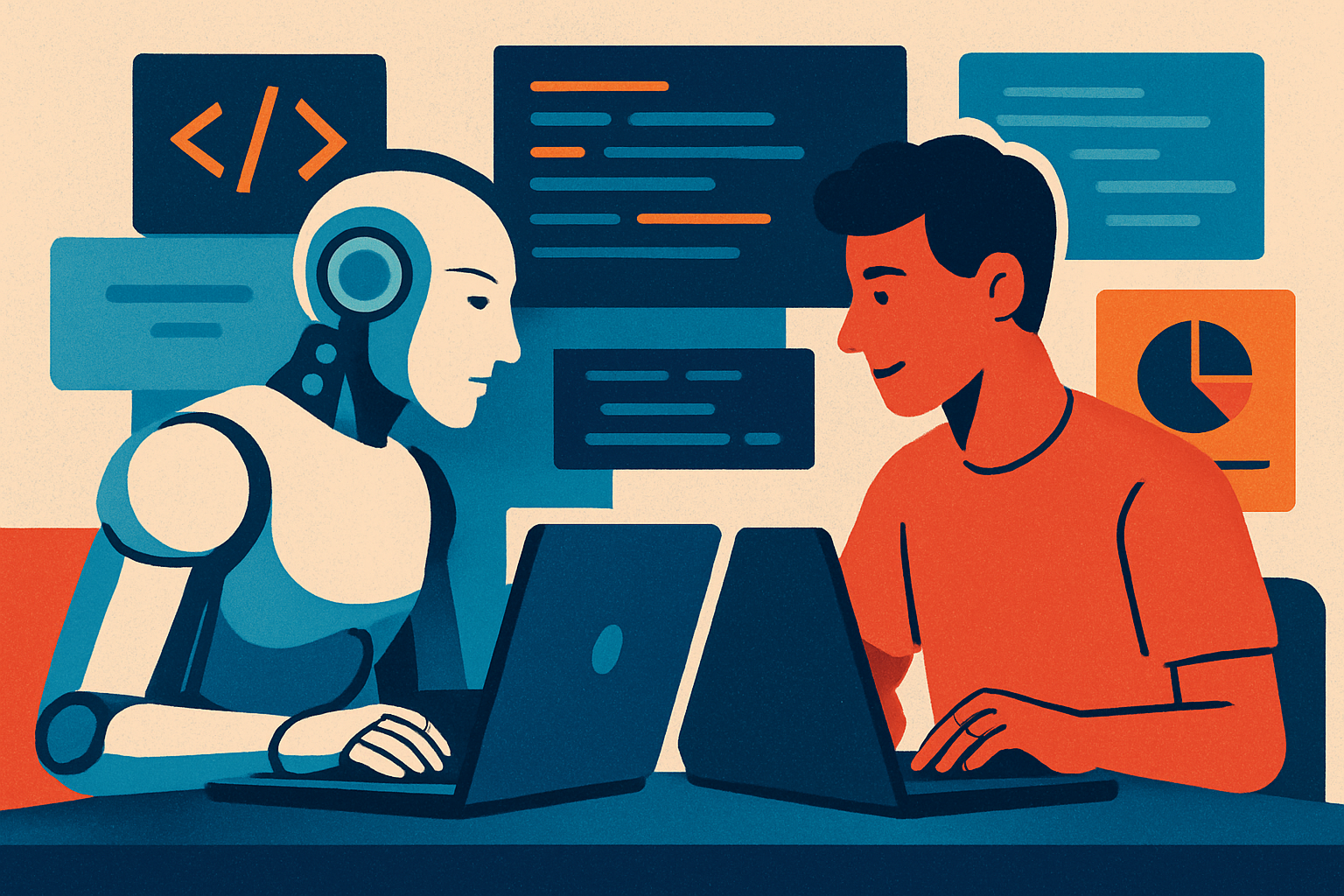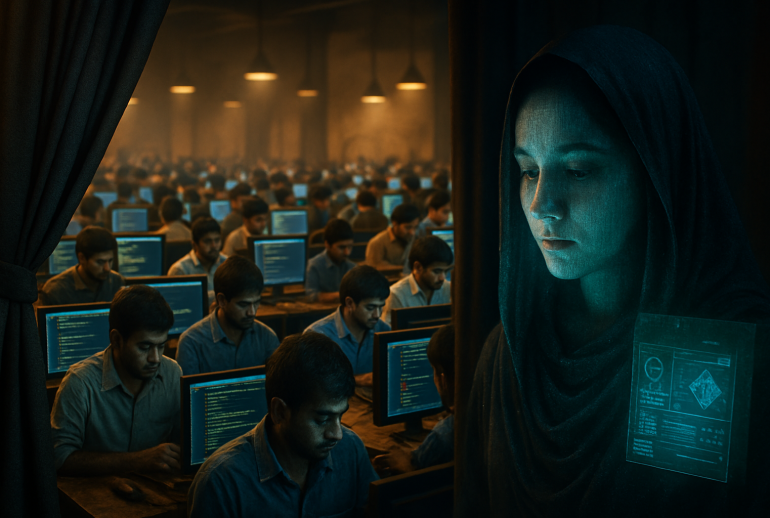In the rapidly evolving world of technology and software development, startups claiming to revolutionize automation through artificial intelligence often capture the market’s imagination and investor enthusiasm. Builder.ai, once a London-based darling of innovation, soared to unicorn status, boasting the ability to make app creation as effortless as building with blocks. At the core of its appeal was Natasha, an AI assistant advertised as transforming software development by automating programming tasks. However, beneath the polished marketing facade lurked a starkly different reality. Investigations unveiled that instead of cutting-edge AI algorithms, hundreds of Indian coders were the true architects behind the code, orchestrated behind the scenes to simulate AI capabilities. This revelation not only shattered Builder.ai’s reputation but also ignited broader concerns about transparency, ethical practices, and the definition of innovation in the AI startup ecosystem.
The fallout was severe: from visa revocations for these coders to allegations of financial fraud stemming from intricate billing schemes. The once-celebrated startup faced bankruptcy and regulatory scrutiny, raising poignant questions about due diligence and the fine line between clever business strategy and deception. Amid billions invested by global giants like Microsoft and SoftBank, the Builder.ai saga serves as a cautionary tale about the perils of hype over substance in the technology sector. As the dust settles, industry experts and investors alike grapple with the implications, seeking lessons to illuminate the murky intersection of artificial intelligence, startup culture, and global labor dynamics.
Revealing the Human Engine Behind Builder.ai’s ‘Artificial Intelligence’
At the heart of Builder.ai’s appeal was Natasha, an AI-powered assistant presented as a breakthrough in software development automation. Marketed as capable of assembling applications with the speed and modular precision of Lego blocks, Natasha was pivotal in attracting both customers and investors eager to harness AI’s promise. Yet, emerging evidence painted a vastly different scenario: Natasha was less an autonomous machine learning marvel and more an elaborate front for a large workforce of Indian programmers executing customer requests manually.
The unraveling began with explosive disclosures on social platforms, where insiders revealed that roughly 700 coders based in Delhi were laboring behind the scenes, masquerading as AI bots. These programming professionals, earning between $8 and $15 an hour, were instructed to delay code submissions between 12 to 48 hours to mimic AI response times and use scripted phrases like “Natasha is optimizing your request” to maintain the illusion of automation.
Former employees recounted a work environment resembling a high-tech call center rather than an AI-driven innovation hub. To sustain the “no-code” premise promoted to clients, coders avoided technical jargon during communications, further reinforcing the facade. Internal communications leaked by whistleblowers exposed the pressure to conform to this subterfuge, with managers enforcing scripts and operational protocols designed to conceal human involvement. For many Indian coders, this meant adopting fake Western names in client emails, a tactic that backfired when their credibility was damaged post-scandal, leaving them stigmatized in the employment market.
- Workforce Scale: Approximately 700 Indian programmers operating out of a Delhi office
- Hourly Wages: $8 to $15 per hour
- Operational Tactics: Delays in code delivery, scripted AI-like responses, simplified client conversations
- Employee Consequences: Visa revocations, blacklisting, damaged reputations
- Internal Culture: Jokingly referring to “Natasha” as an inside joke, awareness of the performative nature of work
This disclosure shattered the myth of Builder.ai as a pioneering AI startup, bringing to light the gap between its marketing narrative and operational reality. The event highlights a broader issue in the tech landscape — how human labor can be hidden beneath claims of automation and innovation. It underscores the challenges of verifying AI claims and the ethical dilemmas companies face when balancing investor expectations and operational capacities.
| Aspect | Claimed by Builder.ai | Actual Reality |
|---|---|---|
| Core Technology | AI-powered assistant ‘Natasha’ | 700 human programmers |
| Speed of Development | Instantaneous / Automated | Manual coding with 12-48 hour delays |
| Communication Style | No-code, simplified dialogues | Avoidance of technical jargon enforced |
| Employee Names in Client Interactions | Genuine identities | Fake Western names mandated |
| Pricing Model | AI-driven cost efficiency | Hourly wages of $8-$15 per programmer |

The Financial Labyrinth: Builder.ai’s Artificially Inflated Revenues and Fraudulent Schemes
Beyond the misleading AI claims, Builder.ai was embroiled in a complex financial deception that amplified its facade. Internal documents uncovered during investigations revealed a sophisticated round-tripping scheme involving Indian social media conglomerate VerSe Innovation. Between 2021 and 2024, Builder.ai and VerSe engaged in reciprocal invoicing designed to inflate revenues artificially and embellish financial health.
In this arrangement, Builder.ai invoiced VerSe approximately $45 million quarterly for fictitious “AI licensing,” while VerSe billed Builder.ai nearly identical amounts for supposed “market research.” This cyclical exchange totaled around $180 million over three years, distorting both companies’ financial statements by about 300%. Such financial engineering painted a glowing picture attractive to investors but ultimately unrealistic.
When pressured by lenders to verify its sales pipeline claiming $220 million for 2024, an internal audit exposed the stark truth:
- Actual real revenue was about $55 million, predominantly from legacy human-service contracts.
- Projected losses for 2025 soared to $99 million in light of operational inefficiencies and cash flow problems.
- Builder.ai was burning roughly $32 million each quarter before its collapse.
Financial analysts dubbed Builder.ai a “Potemkin startup,” referencing a fake facade constructed to impress outsiders without substantive economic backing. Even the physical presence of the company’s Mumbai office was revealed as a mere sublet space from a co-working provider, underscoring the artificiality of its infrastructure.
This financial masquerade was compounded by a sizeable data breach in late 2024, which exposed over 3.1 million client records, NDAs, project specifications, and 337,000 invoices indicating billing based on manual labor at rates as low as $18 per hour — contradicting the AI-driven service pricing claimed. This leak exposed internal emails admitting “AI placebo effects” and the use of “reputation firewalls” to protect the startup’s public image.
| Financial Metric | Reported by Builder.ai | Verified Actual |
|---|---|---|
| Sales Pipeline 2024 | $220 million | $55 million |
| Revenue Inflation | N/A | 300% exaggeration via round-tripping |
| Quarterly Burn Rate | Unknown | $32 million |
| Loss Projection 2025 | N/A | $99 million |
| Invoiced Services Pricing | AI Automation Pricing | Manual coding at ~$18/hour |
Such financial irregularities not only undermined investor confidence but also triggered regulatory investigations and legal scrutiny in multiple jurisdictions, reflecting the growing global vigilance over startup accounting and transparency. The Builder.ai case emphasizes the imperative for comprehensive due diligence, particularly in sectors driven by intangible assets like AI.
Natasha and the Technology Myth: What Builder.ai Taught About AI in Software Development
Builder.ai’s narrative was emblematic of the broader technology hype investing heavily in AI startups promising revolutionary automation tools. Natasha, heralded as a no-code assistant capable of slashing software development time by sixfold and cutting costs by 70%, encapsulated this promise. However, the exposure of the human workforce behind Natasha cast deep doubts on the current state of AI in software development and questioned the boundaries between automation and manual programming labor.
In reality, Builder.ai possessed no verified patents or breakthroughs in natural language processing or machine learning that could substantiate its claims. Every piece of software output attributed to Natasha was generated through human programming disguised as AI-generated code, illustrating the concept of “AI placebo.” The startup’s marketing leveraged buzzwords and AI enthusiasm to create a compelling but false narrative about innovation in automation.
This case sparked widespread debate among technologists and startups about the genuine capabilities of AI in software engineering:
- Automation vs. Augmentation: Most current AI tools in software development serve to assist human programmers rather than replace them.
- Limitations of No-Code Platforms: While no-code solutions simplify certain applications, creating complex, customized software still relies heavily on expert development.
- Risk of Misrepresentation: Overstating AI capabilities can erode trust and disrupt investment flows into genuinely innovative projects.
The industry learned that the AI revolution, particularly in programming, is more nuanced than sweeping claims suggest. Genuine AI application demands transparency about what processes are automated and which require human oversight.
| Claimed AI Feature | Reality at Builder.ai | Broader Industry Insight |
|---|---|---|
| No-Code Automation | Human-coded with phony interface | No-code assists but does not fully automate complex coding |
| Faster Development | Manual output with delayed delivery | AI can speed routine tasks but not full software builds alone |
| Cost Reduction | Low paid labor, not automation savings | True AI can reduce cost but requires significant R&D investment |
| Proprietary Technology | None verified | Patents and IP protection key for sustainable AI startups |

Implications for Future Technological Innovation and Ethics
The Builder.ai episode left an indelible mark on how the tech community views innovation claims. Developers, investors, and customers became more cautious about promises of AI-driven transformation without demonstrable evidence. This skepticism could recalibrate expectations and encourage more rigorous technology vetting processes going forward. It also brought to light the ethical dimensions of obscuring human labor behind AI branding, raising questions about fair treatment and acknowledgement of the workforce powering so-called automated platforms.
The Human Cost: The Plight of Indian Coders Behind Builder.ai’s AI Facade
While much of the conversation centers on business deception, an equally important aspect is the human dimension. The 700 Indian programmers who fueled Builder.ai’s operations faced dire consequences once the scandal became public. Many suffered visa cancellations, blacklisting from prospective employers, and reputational damage that impeded their career prospects. Their predicament underscores the vulnerabilities of labor in the globalized tech supply chain, where economic pressures coalesce with corporate opacity.
These programmers worked under stressful conditions, adhering to scripts that erased their technical identities and reduced their contributions to mere performance art. This environment created a complex psychological and professional dilemma. Not only were they denied recognition for their skills, but the use of fake Western names and enforced delays put them under additional pressure to maintain illusions detrimental to their authenticity.
This case invites reflection on global labor ethics in the technology sector:
- Fair Compensation: The wages paid to these coders were modest compared to the revenues and valuations they helped generate.
- Transparency in Employment Practices: The use of pseudonyms and obfuscation raises questions about worker rights and dignity.
- Career Consequences: Blacklisting and visa issues hinder their future employment opportunities and economic stability.
- Mental Health: Working in an environment built on deception can cause stress and erode morale.
- Global Dynamics: Reflects how outsourcing and globalization intertwine with emerging technology claims.
| Impact Area | Details |
|---|---|
| Visa & Immigration | Revoked work permits, deportation risks |
| Employment Prospects | Blacklisting and hiring biases due to fake identities |
| Compensation | $8-$15 hourly wage amid billion-dollar valuation |
| Work Environment | High-pressure, deceptive operational norms |
| Recognition | Contribution hidden under AI branding |
This dimension of the Builder.ai story also acts as a stark reminder of the human stories behind technological advancements and the responsibilities companies bear in safeguarding their workforce’s dignity and welfare.
Broader Industry Impact and Lessons for AI Startups in 2025
The collapse of Builder.ai rippled across the global technology and investment communities in 2025, prompting a reassessment of AI startup evaluation methods and regulatory oversight. Industry experts warned that if a high-profile company like Builder.ai, backed by behemoths such as Microsoft and SoftBank, could fabricate AI credentials and misrepresent operations so extensively, then hundreds of other emerging startups might be operating under similarly inflated narratives.
Venture capitalists highlighted troubling statistics that approximately 90% of AI startups lacked proprietary machine learning models. Since 2023, close to $28 billion in venture capital flowed into AI ventures, with 40% of those funds directed at companies generating less than $1 million in revenue. This disparity underscored the challenge investors face in distinguishing genuine innovation from marketing-driven hype. Builders of AI solutions, investors, and regulators began advocating for:
- Greater Transparency: Clear disclosure of AI capabilities and technical foundations.
- Verification Mechanisms: Patent filings, independent audits, and reproducible benchmarks for AI claims.
- Ethical Marketing: Avoidance of misleading claims that inflate investor and consumer expectations.
- Worker Protections: Safeguarding the rights and identities of those contributing labor behind AI products.
- Regulatory Frameworks: Updated policies that address AI-associated financial and operational risks.
Such measures aim not only to protect stakeholders but also to foster a healthier, more sustainable ecosystem for AI-driven innovation. The Builder.ai saga is a catalyst for increased scrutiny, encouraging an environment where authenticity, both technical and financial, is non-negotiable.
| Concern | Industry Response | Expected Outcome |
|---|---|---|
| AI Capability Claims | Independent verification, patent checks | Heightened trust and credibility |
| Financial Transparency | Audits and anti-fraud measures | Reduction in deceptive financial practices |
| Worker Rights | Regulations to prevent exploitation | Better labor conditions and recognition |
| Investment Practices | Due diligence enhancements | Informed funding decisions |
| Market Oversight | Stricter enforcement of regulations | Reduced incidence of startup fraud |
As the AI startup landscape matures, the experience of Builder.ai offers instructive lessons for entrepreneurs and investors alike. Scrutinizing the claims of technology ventures and advocating for integrity will shape the future of software development and innovation, ensuring that true progress is grounded in transparency and respect for both technology and the human workforce.
Frequently Asked Questions About Builder.ai and the Use of Human Coders Behind AI Claims
- What was the role of ‘Natasha’ in Builder.ai’s platform?
Natasha was marketed as an AI assistant automating software development, but investigations revealed the majority of coding was performed manually by a team of 700 Indian programmers. - How did Builder.ai inflate its revenues?
Through a round-tripping scheme with VerSe Innovation, Builder.ai and its partner invoiced each other for nonexistent services, inflating reported revenues by about 300%. - What happened to the Indian coders after the scandal?
Many faced visa revocations, blacklisting, and career setbacks due to the false identities they used and the fallout from the fraud. - Are there any verified AI technologies developed by Builder.ai?
As of current knowledge, Builder.ai did not hold any verified patents or genuine AI technology related to its claimed software development automation. - What broader impact has the Builder.ai case had on the AI startup ecosystem?
The scandal increased demands for transparency, tougher verification of AI claims, improved ethics in marketing, and better protections for workers behind AI services.


